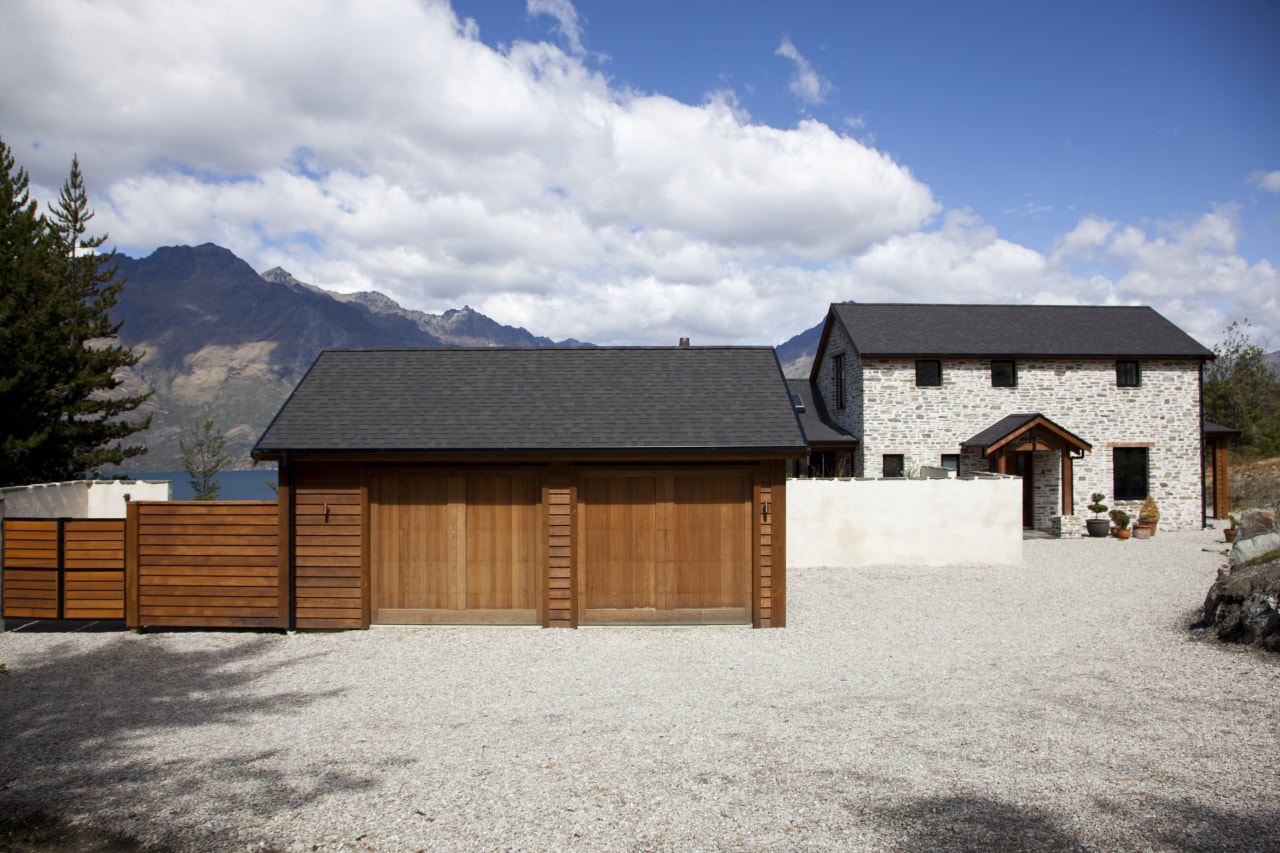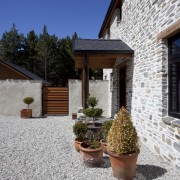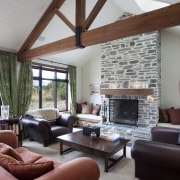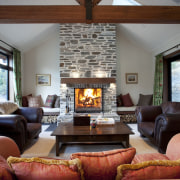Mountain hideaway near Queenstown
Schist stone cottage by Steve Humpherson ADNZ
Local knowledge is always a good thing, and it even applies to architecture. Sometimes, the best design response to a site comes from taking a historical perspective looking at what worked for the early settlers and how they adapted to the climate and the landscape.
In Central Otago in the 19th century, solid stone cottages with gabled roofs provided goldminers with shelter from the harsh winters and hot summers.
The traditional character and insulating properties of those early homes are just as valid today. In designing this country house near Queenstown, architectural designer Steve Humpherson of Sorted Architecture was influenced by the local architectural vernacular and the owners' desire for a design that would take into account the extremes of the local environment.
"The owners also wanted a house with plenty of character," says Humpherson. "Their extensive brief specified sympathetic building materials and landscaping that would anchor the house to the land. In particular, they wanted the house to feature timber and bagged schist, which is a very traditional way of using stone."
The brief also specified deep eaves, thick walls and elements of the American mountain style, with exposed beams and a heavy stone fireplace within a great room with a mezzanine level.
Humpherson says the house, which was built by Cliff Erskine Builders, was originally designed for a different site, but the owners fell in love with another block of land.
"Conveniently, the plans were able to be adapted quite easily essentially this house is a mirrored version of the original plan."
The designer says one of the key challenges was ensuring the design would maximise the expansive lake and mountain views in one direction, and the sun in the other.
"The views are to the south, and we didn't want to compromise these," he says. "Extending the great room out beyond the main stone volume meant we could get sun into the room from the north and west. We also added skylights to the great room and kitchen, which has a north-south aspect. This ensures the interior is flooded with light."
With timber-clad additions on either side of the central volume, a separate garage and semi-enclosed courtyard, the house references local farm buildings. But the design also reflects a European influence, says Humpherson.
"The covered entry porch and heavy wood door recall traditional Tuscan and English country houses. Exposed jarrah columns, beams and trusses, white-painted sarking and the large stone chimney in the great room reinforce this European connection."
Other key features of the great room include built-in shelving on two levels to house the owners' library. On the mezzanine level, the shelving incorporates a home office area. And, although spacious, the great room also features more intimate areas as required by the owners.
Interior designer Emma Gould of White Interiors responded to a brief from the owners to reinforce the sense of a cosy mountain retreat.
Bifolding doors open up the great room to a covered loggia-style outdoor room. This has exposed jarrah trusses and its own wood-burning stone fireplace and chimney. The owner says the sheltered position ensures the seating area can be enjoyed all year.
In the kitchen, a black Falcon Classic range, hanging pot rack, framed cabinet doors and a log burner reinforce the traditional look.
"The log burner sits within an extra-large, hearth-style chimney, which was modelled on an old coal range," says Humpherson. "It has a very high mantel, much as it would have had in years gone by."
But rather than slavishly following tradition in every way, the designer added square-edged, CaesarStone benchtops that help to keep the look crisp and functional. An upstand was designed to conceal small appliances.
Additional storage space is provided in a butler's pantry, which is situated between the kitchen and formal dining area in the great room. The butler's pantry also has a sink and wine refrigerator.
Other rooms on the ground floor include the master suite on the other side of the kitchen, and a media room.
For uniformity, the master suite cabinetry is similar to the kitchen cabinets. Other cabinets in the great room and media room have a similar profile, in Tasmanian oak.
Story by: Trendsideas
Home kitchen bathroom commercial design
Classic looks, contemporary efficiency
Diving into nature
Personality plus
















